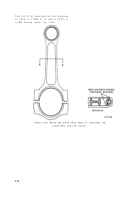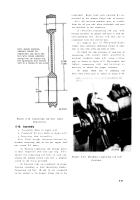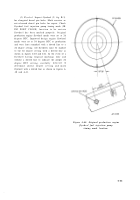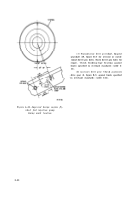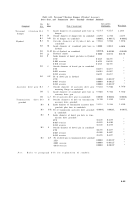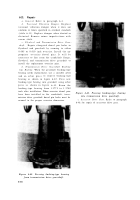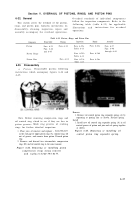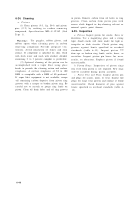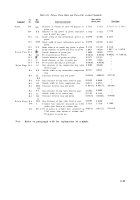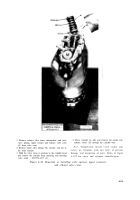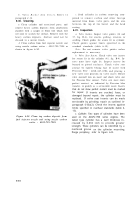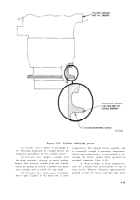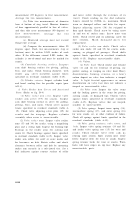TM-9-2815-200-35
ENGINE, WITH CONTAINER:TURBOSUPERCHARGED, DIESEL ,FUEL INJECTION ,90-DEGREE “V” TYPE, AIR - COOLED ,12 - CYLINDER , ASSEMBLY ;MODELS AVDS-1790-2M (2815-856-4996), AVDS-1790-2A AND AVDS-1790-2AM (2815-856-9005)
TECHNICAL MANUAL; DIRECT SUPPORT, GENERAL SUPPORT AND DEPOT MAINTENANCE MANUAL INCLUDING REPAIR PARTS AND SPECIAL TOOLS LISTS
TM-9-2815-200-35 - Page 344 of 779
6-26. Repair
a. Pistons.
(1)
Replace
pistons
which
are
not
within
limits specified in overhaul standards (table 6-
13).
(2) Replace pistons which are distorted,
cracked, worn, or abraded.
(3) Replace piston if oil holes in the ring
lands cannot be cleared or if lands are damaged
or broken.
(4) Replace pistons that are badly burred,
nicked, or scratched. Remove minor burs, nicks,
or scratches from pistons with crocus
cloth
dipped in dry-cleaning solvent or mineral spirits
paint thinner.
b. Piston Rings.
Piston rings cannot b e
repaired. All piston rings must be replaced with
new rings at engine overhaul.
c. Piston Pins and Plugs.
Replace piston pins
and plugs which are cracked, or have deep nicks
or scratches. Remove minor nicks or scratches
with crocus cloth dipped in dry-cleaning solvent
or mineral spirits paint thinner. Replace piston
pin plugs which have a large wear pattern on the
end. Replace piston pins and plugs not within
limits specified in overhaul standards (table 6-
13).
6-27. Assembly
a.
Check marking on new rings and install the
upper (tapered) compression ring and the two
intermediate compression rings with the marking
“UP” toward the piston dome. Install all rings
using remover and replacer - 5120-795-0177 as
shown in figures 6-44 and 6-45. Use care in
installing rings to avoid damaging ring lands or
distorting rings.
b. Measure side clearance of all new ring (fig.
6-46). Replace rings when side clearance does
not conform to limits specified in overhau l
standards (table 6-13).
Figure 6-46. Checking piston ring side
clearance.
c. Install piston in bore of piston and install a piston pin
plug at each end of piston pin.
d. Select pistons according to weight. Variations in the
weight of pistons in an engine should not exceed 0.5
ounce.
6-50
Back to Top

